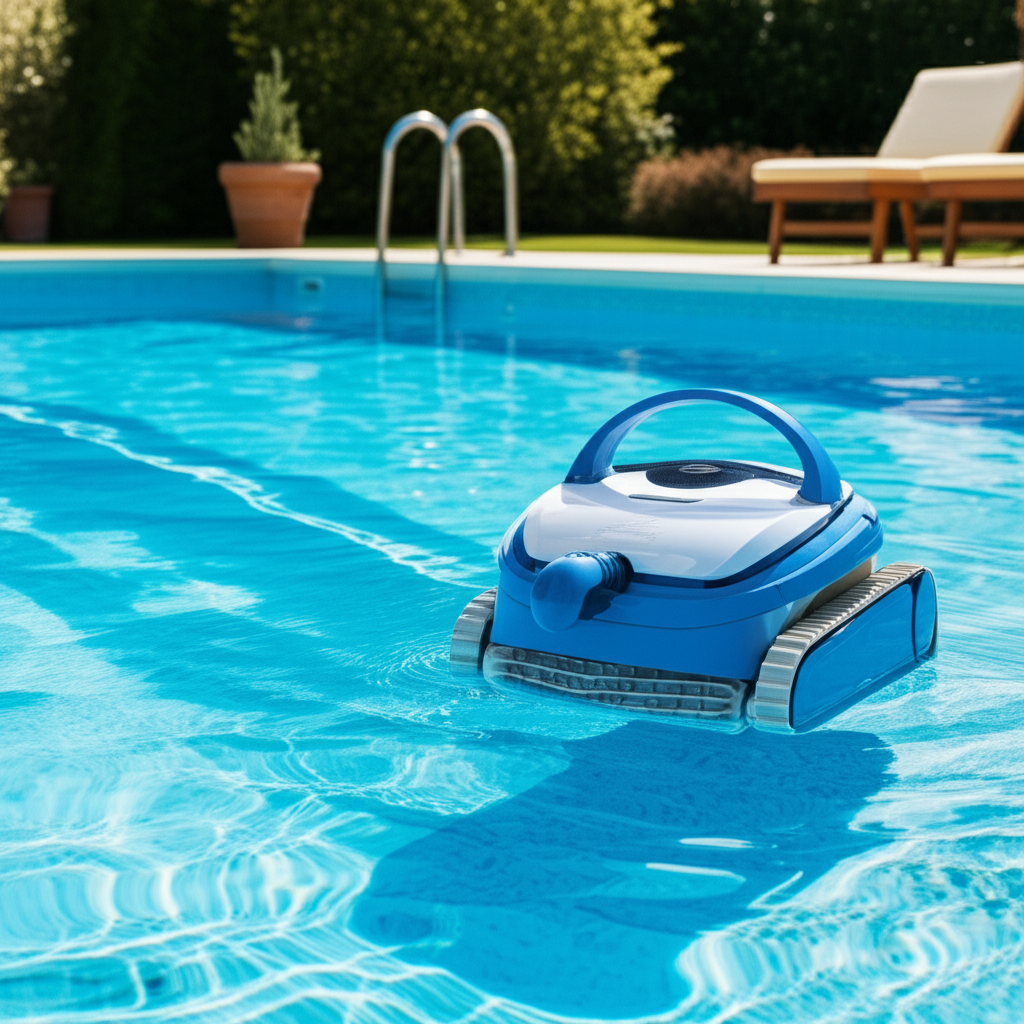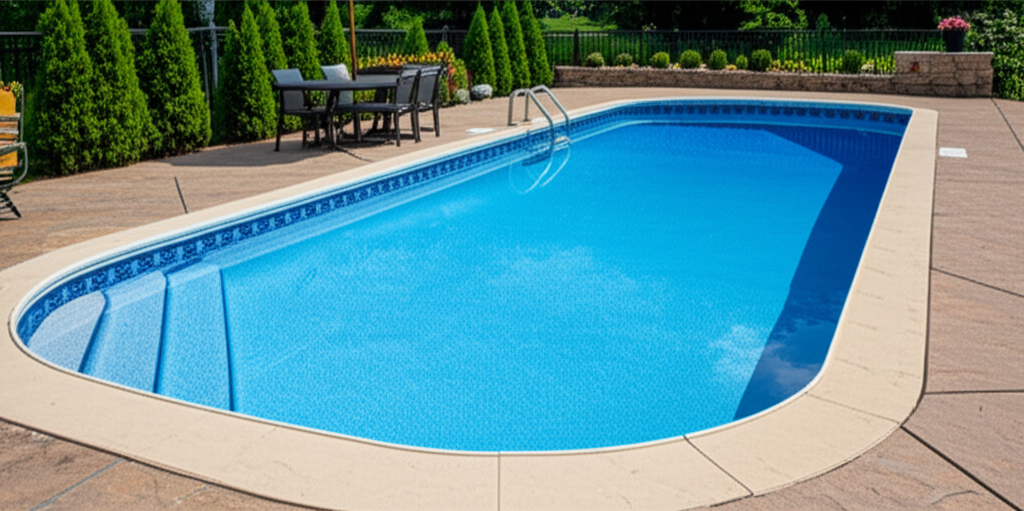- Why Consistent Pool Vacuuming is Indispensable
- The Two Pathways to a Pristine Pool Surface
- Automated Pool Vacuuming for Hands-Off Maintenance
- Mastering Manual Pool Cleaning for Focused Results
- A Step-by-Step Guide to Effective Pool Vacuuming (Manual Technique)
- Achieving Stunning Results Every Time
- Beyond the Basics: Tips for Effortless Pool Cleanup
Pool vacuuming is often seen as a chore, yet it’s the cornerstone of maintaining a crystal-clear, inviting swimming environment. Far from being a tedious task, effective pool vacuuming, when approached with the right knowledge and tools, can deliver truly stunning results with surprising ease. A clean pool isn’t just about aesthetics; it’s about hygiene, water chemistry balance, and extending the life of your pool equipment. Understanding the nuances of this essential maintenance step can transform your pool from merely functional to a gleaming backyard oasis.
Why Consistent Pool Vacuuming is Indispensable
The visible grime – leaves, insects, dust, and dirt – that settles on your pool floor and walls is only part of the story. Microscopic debris, unseen contaminants, and even pollen can accumulate, impacting water clarity and quality. Regular vacuuming removes these particles before they can decompose and throw off your water chemistry, leading to costly and time-consuming chemical adjustments. It also prevents clogs in your filtration system and reduces the strain on your pump, ultimately saving you money on repairs and energy consumption. An immaculately vacuumed pool reflects light beautifully, inviting swimmers in and enhancing the overall enjoyment of your outdoor space.
The Two Pathways to a Pristine Pool Surface
When it comes to removing debris from the bottom of your pool, you essentially have two primary methods: automated and manual. Both have their merits, and often, a combination of the two provides the most comprehensive care.
Automated Pool Vacuuming for Hands-Off Maintenance
Automated pool cleaners offer unparalleled convenience. Robotic pool vacuums operate independently, powered by electricity, and traverse your pool floor and sometimes walls, collecting debris in an onboard filter bag. Suction-side cleaners connect to your skimmer or dedicated vacuum line, using the pool’s pump suction to draw in water and debris. Pressure-side cleaners, conversely, connect to a dedicated booster pump or return line and use water pressure to create movement and capture debris. These automated systems are excellent for routine maintenance, keeping general debris levels low with minimal effort on your part.
Mastering Manual Pool Cleaning for Focused Results
While automated cleaners excel at general upkeep, nothing beats the precision and power of manual pool cleaning. This method allows you to target specific areas of heavy debris, troublesome dirt spots, or areas often missed by automated units. It’s also crucial for initial clean-ups or when battling algae blooms.
To embark on manual pool vacuuming, you’ll need a few key pieces of equipment:
Telescopic Pole: To extend your reach across the pool.
Vacuum Head: Available in weighted or wheel-based designs to suit different pool surfaces (concrete, vinyl liner).
Vacuum Hose: A durable, floating hose designed for pool use.
Skimmer Plate or Vacuum Port Adaptor: To connect your hose to the suction line.
The process involves connecting the vacuum head to the pole, then the hose to the head. Submerge the head and hose slowly, allowing the hose to fill with water and expel all air bubbles – this is crucial for creating strong suction. Once primed, connect the open end of the hose to your skimmer suction port (often by removing the skimmer basket and inserting the hose into the dedicated hole, or using a skimmer plate).
A Step-by-Step Guide to Effective Pool Vacuuming (Manual Technique)
To achieve that sought-after pristine finish, follow these steps for manual pool vacuuming:
1. Prepare Your Pool: Ensure your pump and filter are operating correctly. It’s often beneficial to backwash your filter beforehand if it’s dirty, as this ensures maximum suction. Briefly brush down any visible dirt from the walls to the floor.
2. Assemble Equipment: Attach the vacuum head to the telescopic pole.
3. Submerge and Prime: Place the vacuum head into the pool. Feed the hose into the water, allowing it to slowly fill. You’ll see air bubbles escape from the vacuum head – wait until they stop, indicating the hose is full of water.
4. Connect to Suction: Once primed, take the free end of the hose and connect it directly to your skimmer, or a dedicated vacuum port, ensuring a tight seal. You should immediately hear and feel strong suction at the vacuum head.
5. Begin Vacuuming: Start at one end of the pool, using slow, deliberate, overlapping strokes. Think of it like vacuuming a carpet. Moving too quickly will stir up debris, making it harder to collect. Overlap each stroke to ensure no spots are missed. Pay special attention to corners and edges where debris tends to accumulate.
6. Monitor Suction & Filter: If suction weakens, check for clogs in the hose or vacuum head, or if your skimmer basket is full. Keep an eye on your filter pressure gauge; if it rises significantly, your filter may be getting saturated with debris and require cleaning/backwashing soon after vacuuming.
7. Clean Up: Once you’ve finished vacuuming the entire pool floor, disconnect the hose, clean your skimmer basket and pump basket, and consider backwashing your filter again to clear out the vacuumed debris.
Achieving Stunning Results Every Time
The secret to effortless and stunning results lies not just in the vacuuming technique itself, but in a holistic approach to pool maintenance.
Regularity is Key: Vacuuming weekly, or even more frequently in peak seasons or after storms, prevents debris buildup.
Brush Before You Vacuum: Brushing dislodges clinging dirt and algae, making vacuuming more effective.
Maintain Water Chemistry: Balanced pH, alkalinity, and sanitizer levels keep water healthy and prevent issues like algae blooms that make vacuuming much harder.
Filter Maintenance: A clean and efficient filter is paramount. Ensure you backwash or clean your filter according to manufacturer guidelines to maintain optimal water flow and clarity.
Address Algae Quickly: If you notice algae, treat it immediately with algaecide and diligently brush before vacuuming to remove dead algae. You may need to vacuum “to waste” (bypassing the filter) to avoid clogging your filter with dead algae.
Beyond the Basics: Tips for Effortless Pool Cleanup
To further reduce the “effort” aspect of pool vacuuming:
Use a Pool Cover: A quality pool cover prevents debris from entering the water, significantly reducing the frequency and intensity of vacuuming.
Strategic Landscaping: Avoid planting shedding trees or shrubs directly around the pool area.
Robotic Pool Cleaner Investment: While manual cleaning is essential, a robotic cleaner can handle daily maintenance, allowing you to reserve manual vacuuming for deeper cleans.
Ultimately, pool vacuuming, whether manual or automated, is an indispensable part of comprehensive pool care. By understanding the tools, techniques, and underlying principles, you can transform this often-dreaded task into a straightforward process that consistently yields a sparkling, inviting pool – a true testament to effortless maintenance and stunning results.



